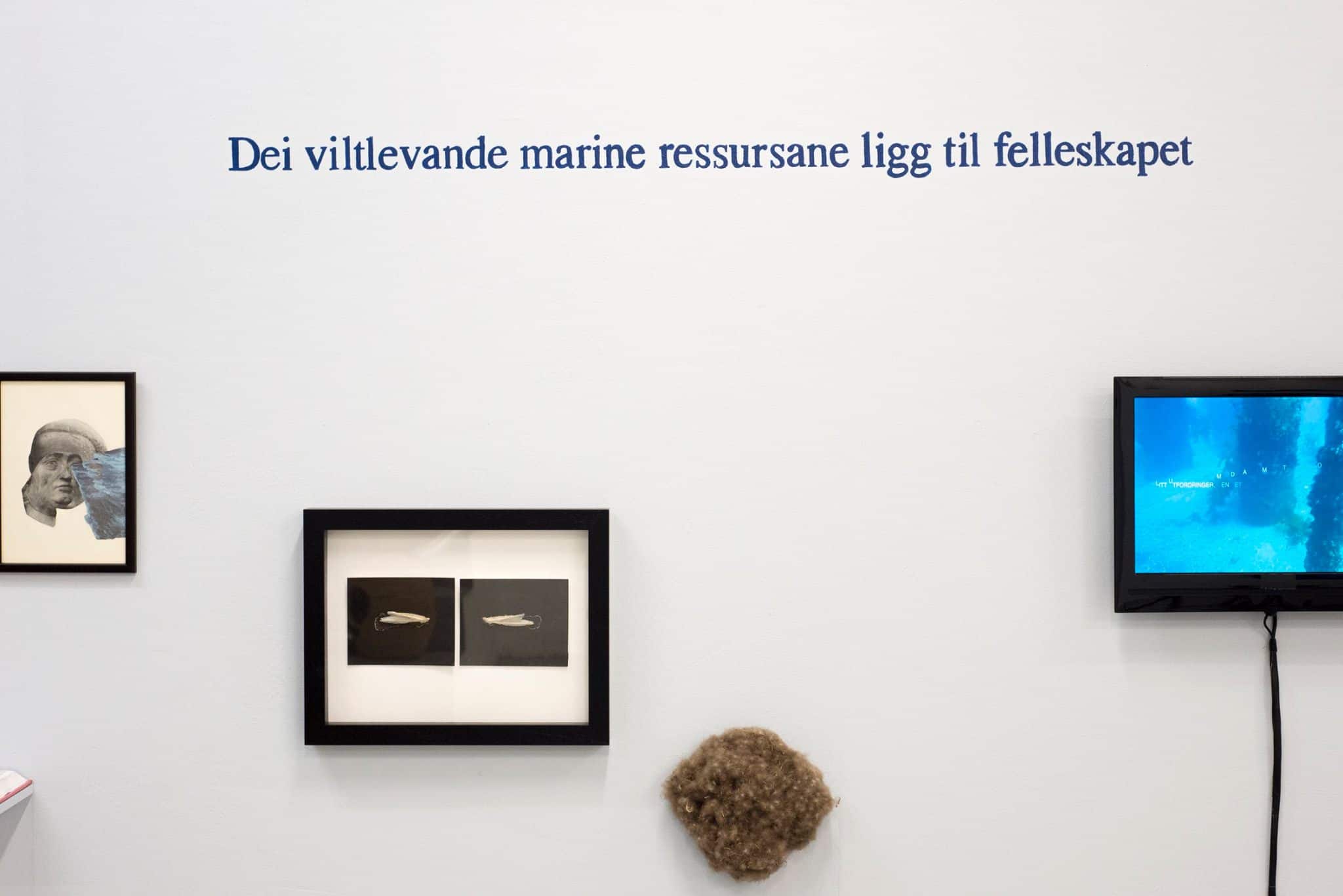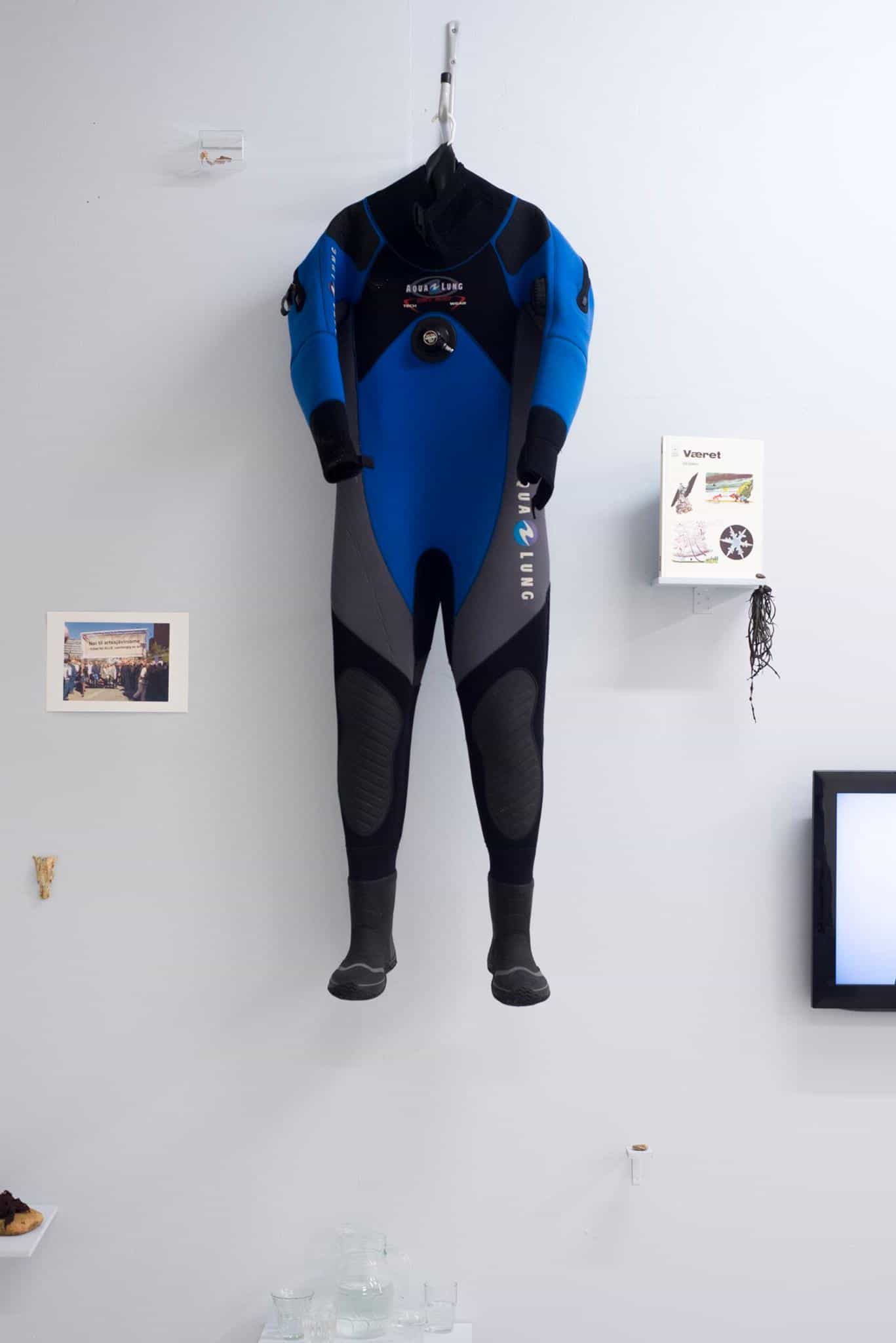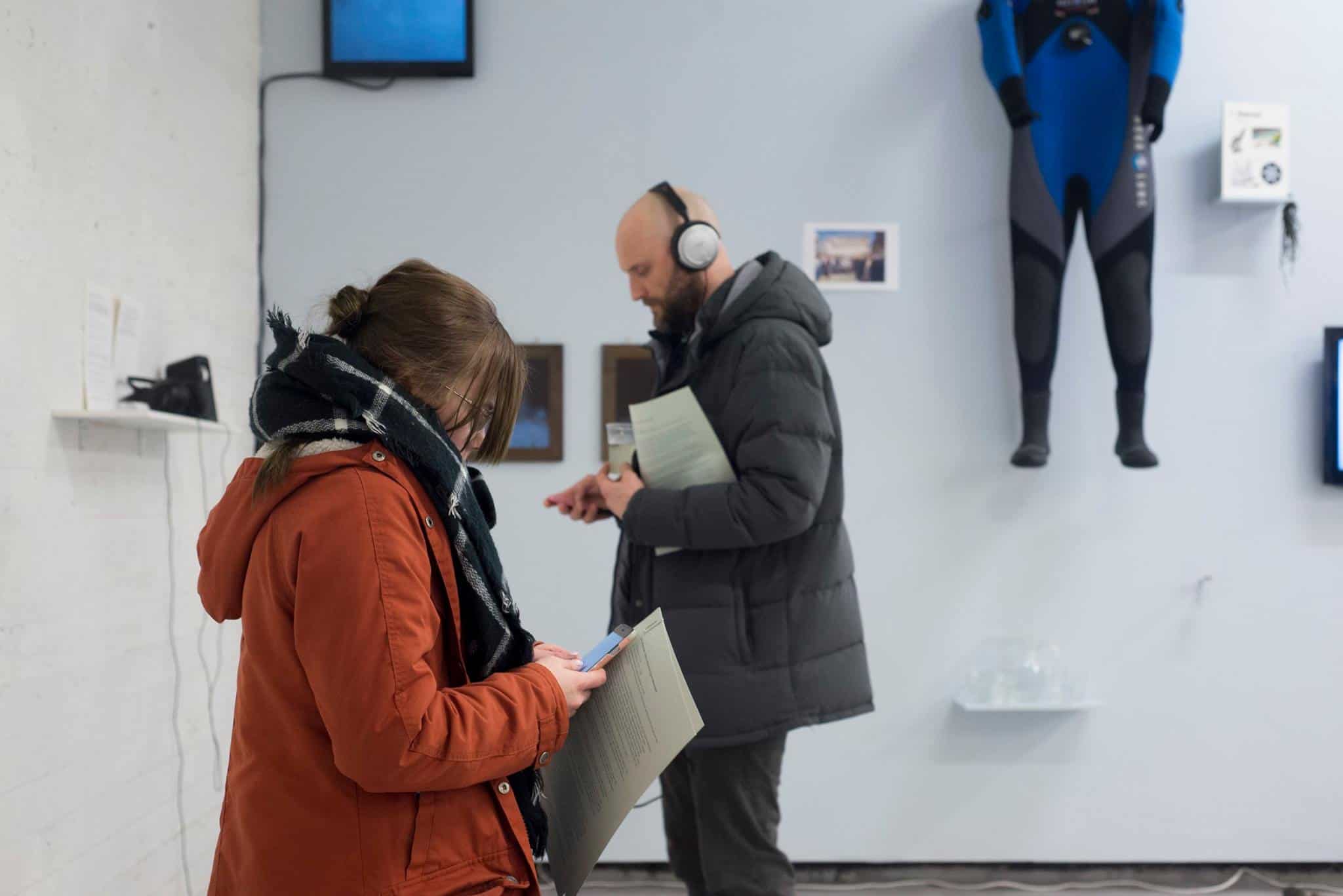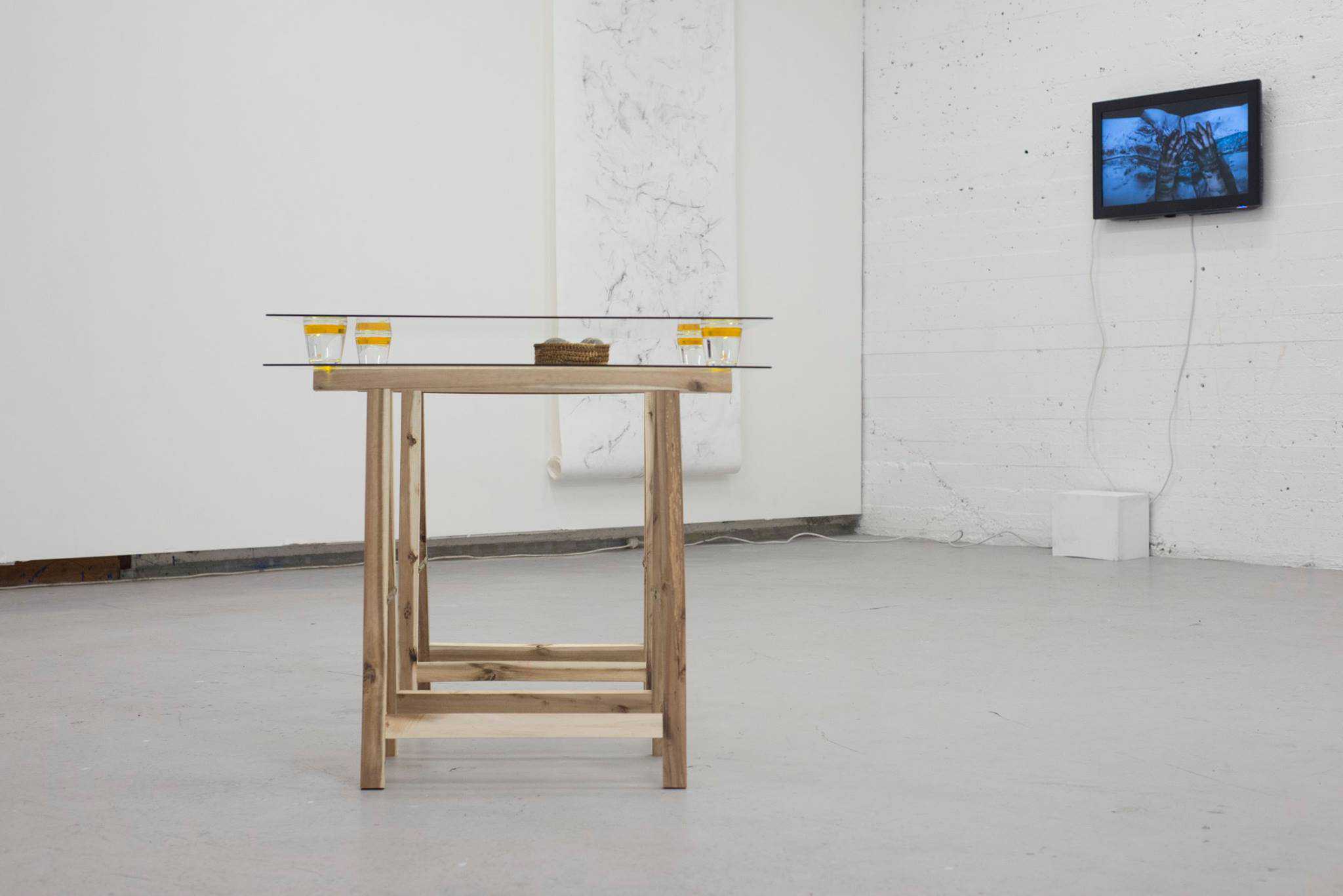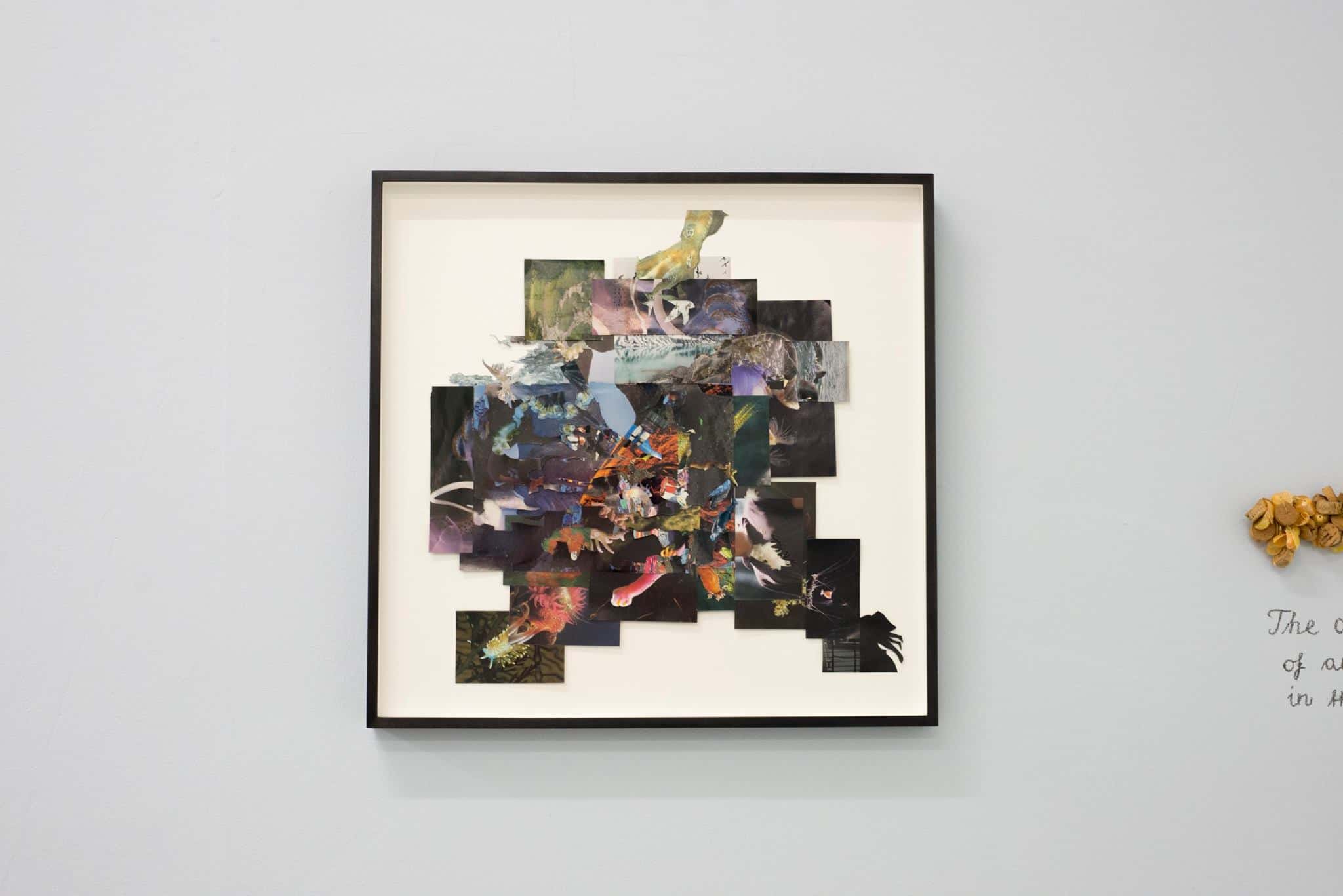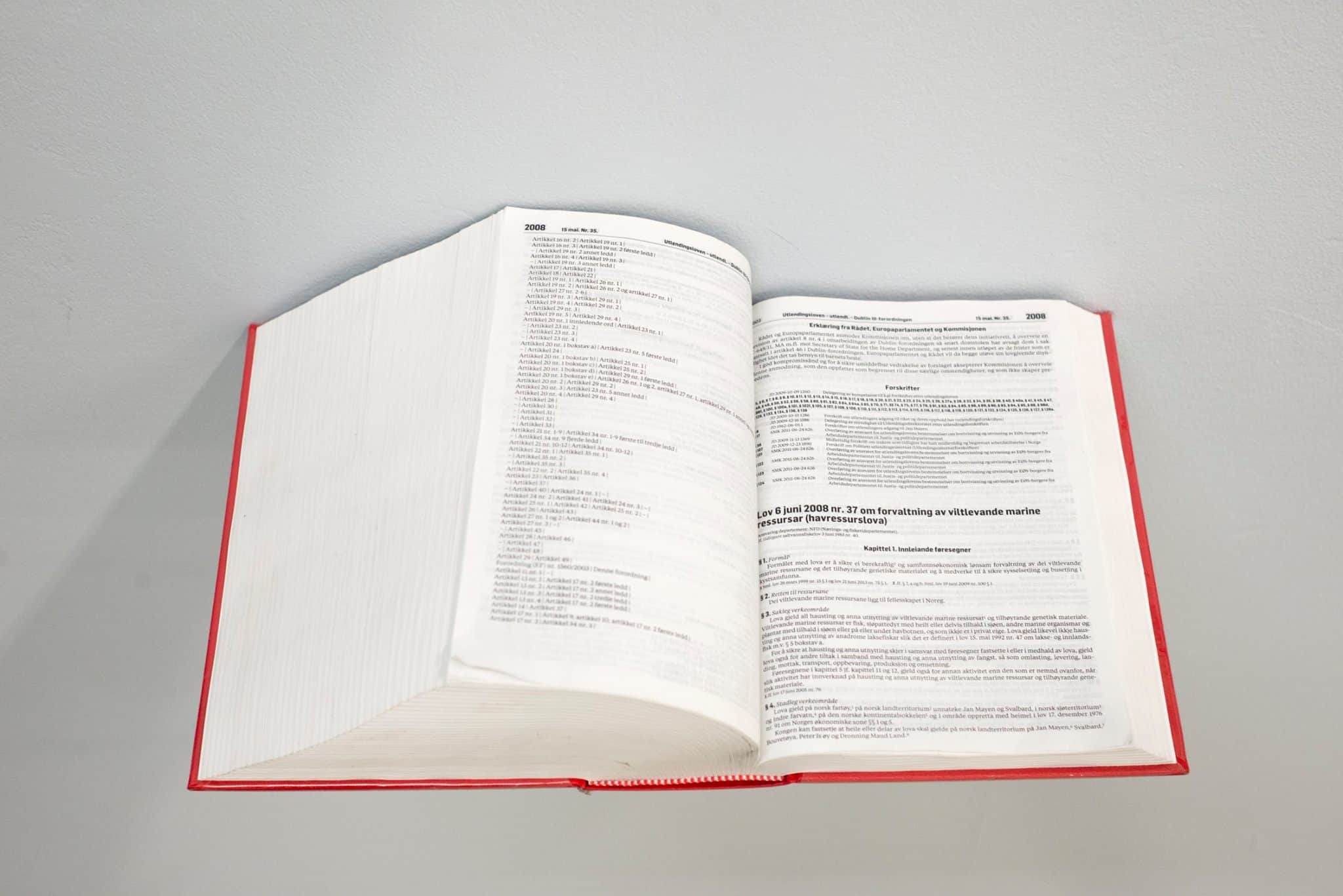Ensayo #4 exhibition at Kurant, Tromsø, Norway in March 2016
Wild Living Marine Resources Belong to Society as a Whole
11.03 Opening 19.00
12.-13.03 Open Exhibition 12:00 – 17:00
12.03 Performance by Søssa Jørgensen 14:00
12.03 Film screening at Verdensteatret followed by a talk. The Agronaut by Kjersti Vetterstad 19:00
Svein Kristian Arntzen (UiT), Camilla Brattland (UiT), Jørund Aase Falkenberg, Kjersti Gabrielsen (Havforskningsinstituttet), Christy Gast, Geir Tore Holm, Ane E. Johansen, Jahn Petter Johnsen (Norges fiskerihøgskole, UiT), Søssa Jørgensen, Maria Karlsen (Natur og Ungdom), Alfred Karoliussen (Fiskernes Agnforsyning), Michelle-Marie Letelier, Camilla Nicolaisen, Vidar Nikolaisen (Fiskernes Agnforsyning), Maja Nilsen, Randi Nygård, Carolina Saquel, Ánde Somby (UiT), Barbara Savedra (Wildlife Conservation Society, Chile), Karolin Tampere, Kjersti Vetterstad, Cecilia Vicuña, Paul Wassmann (UiT).
Organised by Randi Nygård and Karolin Tampere together with Henrik Sørlid at Kurant.
What can science, law, management, language, and cultural expressions tell us about our relationship with nature? Does nature have other inherent values than potentially being a resource for us to use? Is society part of the ecosystem and the ecosystem part of society? Or is it necessary to view ourselves as outside of nature in order to manage it?
The exhibition at Kurant is the start of a long term project taking place in 2016 and 2017, departing from section two in the introduction to the ‘Norwegian Marine Resources Act’ of 2008, which states “Wild living marine resources belong to Norwegian society as a whole”. The law made the management of the Ocean into a ecosystem-based management.
We wish to look at this legal document from many different perspectives; through the nuanced information given by researchers, fishermen and locals, through translations of the text into concrete objects and sounds, and through poetical interpretations. What does local experience-based knowledge say about management in relationship to the perspectives of the law? How can you understand an ecosystem as a whole? Is it possible to see ourselves as part of nature in new ways through studying it, through curious attention, direct contact and playful investigation? Our language most often separates nature and culture, but if nature in itself is a kind of evolving language, does it contain the same division? Are there powers in nature writing us and our culture forth? And is our freedom, our expressions, and our consciousness, subsequently part of a larger wild living system which we are usually unable to perceive? How and which values are created in nature, science, and in our culture?
We will look at the law in scientific, artistic, and ordinary everyday terms, and through the symbolism and representation of objects. We want to include the seal, the whale, and the cod through sound, images and performances.
We are curious about ecosystem-based management, the culture and language of the cod, the influence that climate change is having on the wild living and on society as a whole. We want to expand our thoughts about what values nature contains. And we want to talk about what a society as a whole is, how it works and what kinds of responsibility its members have. We shall therefore start the project with conversations around the Marine Resources Act with professors in Arctic and Marine Biology, Fishery and Management, two employees at Fiskernes Agnforsyning, two local artists, an associate professor at the Faculty of Law musician, writer and Sami joik artist, a Post doc from Centre for Sami Studies, an associate professor of Ocean Law, the head of the biobank Marbank at The Institute of Marine Research, the head of Tromsø Natur og Ungdom and a biologist and director of The Wildlife Conservation Society in Chile. Aspects of the conversations will form part of the exhibition at Kurant, and there will be a publication in autumn.
By placing greater abstract systems, such as, climate models, information and data from science, politics or law, in contact with geographical areas, individuals, animals, plants and objects, and by interpreting this information in poetical, intuitive, and bodily manners, we hope new images of ourselves and nature can arise.
The exhibition-project is funded by Billedkunstnernes Vederlagsfond and Arts Council Norway. A great thank you to all the participants, Kysten Tromsø County and Norwegian Visual Artists Association`s (NBK) Artist-in-residency in Ny-Ålesund, Svalbard.
And thank you to Lise Doksæter and Petter Kvadsheim in the project “3S” (Sonar Safety Sea mammals) FFI, the Institute for Marine Research and Lise Langgård lending us their recorded sounds of fish and sea mammals.
PROGRAM
Saturday 05.03
21.00 A celebration of the 126th anniversary of the Battle in Trollfjorden
The Battle in Trollfjorden was a violent confrontation between coastal fishermen and commercial trawlers that helped push forward necessary changes in the Lofoten Law. We will celebrate this day with diverse historical and maritime presentations by Henrik Sørlid, Randi Nygård and Karolin Tampere, there will be conceptual smoking of cod by the artist Camilla Renate Nicolaisen and music by DJ Matti Aikio og Nicolas Siepen.
Friday 11.03
19.00 The exhibition opens
Smokehouse
Artist Camilla Nicolaisen will be smoking salmon and halibut in her self-made smokehouse. The process lasts all evening, and the public can bring their own pre-salted food for cold smoking.
20.00 ‘Onde va la Lancha, performance lecture by Christy Gast
The artist will share songs of the sea that she learned from humans and animals in Tierra del Fuego.
Saturday 12.03
The exhibition is open 12.00-17.00.
14.00 When I fish it doesn’t matter if it bites or not.
Performance by Søssa Jørgensen in the city-bay.
Does the artist only wish to have the line in the water, or is there another reason for not catching anything? The public is invited into the sea. Via text and that which can be found on the bottom of the shore – a local status will be formulated. Sound by K. Tampere.
19.00 Screening of THE AGRONAUT at Tromsø Filmklubb Verdensteateret followed by a conversation between Randi Nygård and the director Kjersti Vetterstad.
The eternal encounters the perishable in the documentary The Argonaut, which follows the hermit Montserrat Canudas Jorba’s life at her farm on a property outside the village El Bruc in the Spanish region of Catalonia. The title of the film plays with the greek myth Jason and the Argonauts and Jorba’s role as navigator in the landscape she lives in and off. The Argonaut is, as she imagines it, a time traveler from the times of the fossils into the future. Close studies of plants and animals that inhabit the place, are juxtaposed with images and stories from Jorba’s life on the farm – a life marked by acceptance of the mechanisms that form our environment. «We shall all return to the earth» she says in the film. «We are also biodegradable».
Kjersti Vetterstad (1977) is an visual artist living in Drammen.
Sunday 13.03
The exhibition is open between 12.00-17.00
Wild living marine resources belong to society as a whole is a part of Ensayos#4, which is an interdisciplinary project that began in 2015 and deals with management, language, values and identity related to the ocean and the coast in certain parts of Norway and Chile. The goal is to understand, express and manage the big environmental issues we are facing in new and better ways. ENSAYOS is a program initiated in 2011 by curator Camila Marambio, the project is based on collective residency periods inspired by the existing conservations efforts of WCS Karukinka Natural Park and motivated by the strong sentiment that this location, despite its remoteness, is a cultural and geographical center from which to speculate and exercise emergent forms of bio- cultural ethics.

